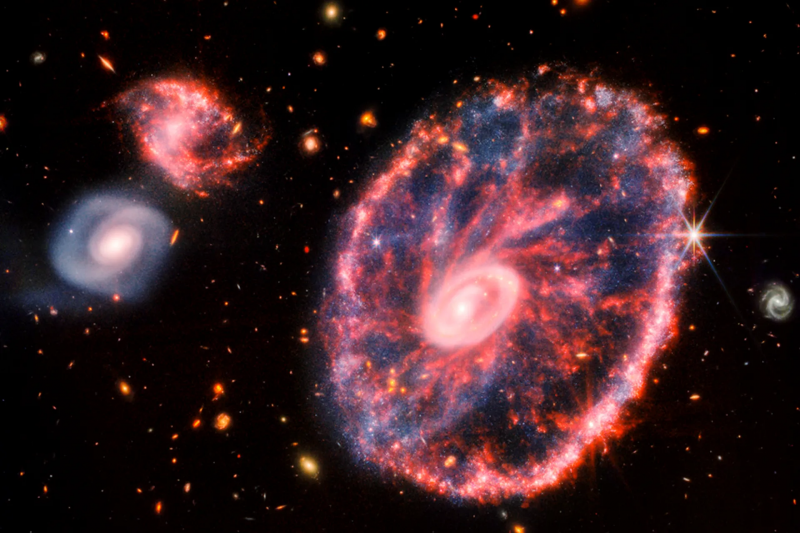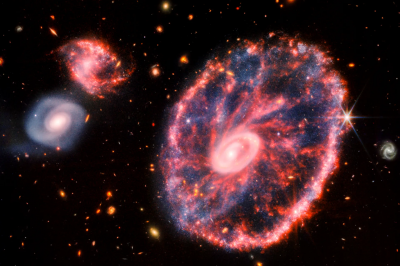Astronomers have discovered a massive, extremely old galaxy that shouldn't exist, according to their current understanding of how early galaxies formed. The galaxy, named ZF-UDS-7329, contains more stars than the Milky Way and appears to have formed about 13 billion years ago—just 800 million years after the universe's age of 13.8 billion years. NASA's James Webb Space Telescope (JWST) was able to observe ZF-UDS-7329, and scientists say a galaxy of this size should not have formed so early in the universe as dark matter did not exist yet, only 800 million years post-Big Bang.
Dr. Thimya Nanayakkara, an astronomer at Swinburne University of Technology in Australia who led the spectral analysis of the JWST data, stated, "We are now surpassing what was possible to confirm the oldest giant passive galaxies existing in the depths of the universe. This pushes the boundaries of our current understanding of how galaxies form and evolve. The key question now is how it can form so quickly at such an early time in the universe and what mysterious mechanisms prevent it from forming stars suddenly when the rest of the universe does."
For a long time, astronomers believed that dark matter was essential for significant galaxy growth. Current theories suggest that dark matter halos, which are mysterious and invisible substances believed to make up 25% of the current universe, merged with gas to form the first galaxy seedlings and allowed them to accumulate stars. After one to two billion years of the universe's age, early primitive galaxies reached adolescence, forming into dwarf galaxies that began devouring one another to grow into galaxies like ours.
However, the new discovery contradicts this theory, as ZF-UDS-7329 did not have dark matter present at the time it formed, or at least not in sufficient quantities to support such a massive galaxy. Nevertheless, this galaxy exists, indicating "significant gaps in our understanding" of how early stars and galaxies formed, as written by the scientists behind this discovery.
Given the time it takes for light to travel through vast space, by the time it reaches Earth, it is redshifted. Astronomers have developed techniques to detect how enormous this redshift is, allowing them to determine that the image captured by JWST is likely about 11.5 billion years old. They state that the stars in ZF-UDS-7329 may have formed around 1.5 billion years later, meaning the galaxy is approximately 13 billion years old.
Scientists have attempted to capture a clear image of this galaxy for seven years, but it was too distant and dim for even the largest telescopes on Earth to obtain a sufficiently clear image to measure its age. With the James Webb Space Telescope, they finally succeeded.
Co-author of the study, Claudia Lagos, an associate professor of astronomy at the University of Western Australia, remarked, "Galactic formation is largely determined by how dark matter is concentrated." However, the new observations of ZF-UDS-7329 show that the galaxy formed without enough dark matter, and soon after a sudden star formation explosion, the galaxy became quiet, signifying a halt in star formation.
Lagos noted, "The existence of these extremely massive galaxies at such an early time in the universe poses significant challenges to our standard model of cosmology. This is because we do not believe that the massive dark matter structures hosting these massive galaxies had enough time to form yet. More observations are needed to understand how common these galaxies are to help us grasp how colossal they truly are."
The next steps for the team will be to find more galaxies like this to confirm the results and uncover answers about how this occurred. The research paper was published in the journal Nature.




